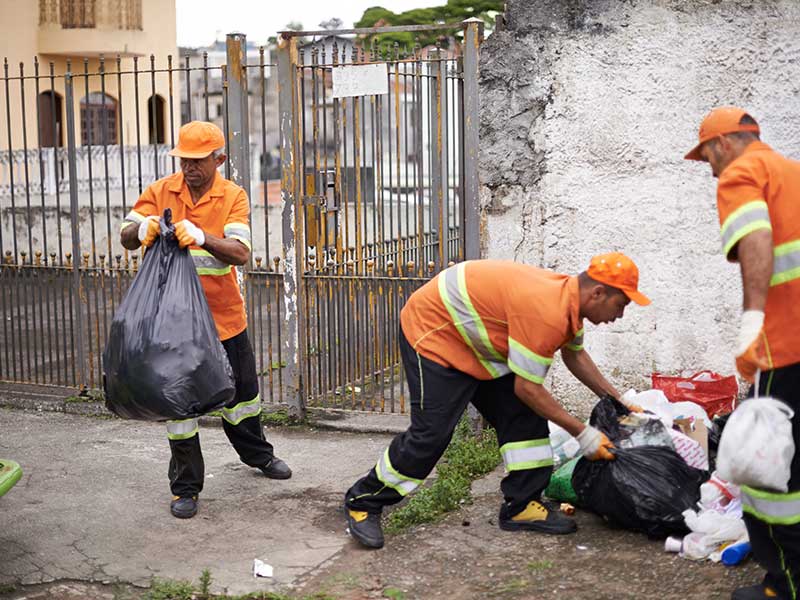
Depending on which profession, job or career path you have decided to go down, we all know work can be a stressful and tiring after working day after day. This constant toll on the body and mind can have serious consequences if they aren’t looked after and managed well. Outside of work, many families have children, loved ones, pets, illnesses, expenses, responsibilities, social expectations and many others, it isn’t difficult to understand why certain people may want to “ease” some of that pressure with the help of substances, namely drugs and alcohol, although tobacco and caffeine also play a part within this mix as they are also technically drugs too.
Risk Factors
Here are several factors that a person may encounter within a variety of jobs that may precede or trigger alcohol use and abuse:
Access & Availability: Some jobs may themselves revolve around drugs or alcohol. These jobs, such as those within the service industry may put a person around alcohol on a day-to-day basis, providing temptation and greater acceptance of this behavior, both during and after work. Likewise, healthcare professionals are also around drugs regularly so it is easy to understand why this may become a problem if an individual already has or develops an addiction to drugs and/or alcohol.
Social Networking: Many jobs require people to engage in activities and events outside of the office or fixed workplace. A large number of these events may involve or be centred around alcohol use. In the business world among others, individuals take clients to dinner or to play golf and often entertain and strive to impress them by providing alcohol. In addition to this and in any field, people may view going to the bar after work as an opportunity to gain a sense of camaraderie with their coworkers or maybe go to the pub with their partners to relax and unwind at the end of the day.
Pain: Many jobs may cause physical stress or injury. These people may be more apt to consume alcohol, take prescription or over the counter (OTC) painkillers to rid themselves of pain they experience. These then long-term, can become addictive and as such, develop an drug addiction to prescription/OTC painkillers.
Irregular Hours Or Shift Work: People who work irregular hours, shifts or those who work throughout the night may develop shift work sleep disorder (SWSD) which can usher in an array of physical and mental health problems. People who have a schedule that does not follow the typical circadian rhythm sleep patterns may be more inclined to consume alcohol or drugs as a sleep aid.
A study published by Oxford University Press’s Alcohol and Alcoholism Journal found that in comparison to other workers, night-shift workers with poor sleeping patterns had over two times the instance of engaging in heavy drinking, with a frequency of 17.6%.
Long Hours: Increasingly, within highly competitive fields, people are expected or pressured to work a greater number of hours. Also, a person may work more because they are suffering from financial duress. An increased number of hours may lead to several things that can trigger drug or alcohol use and abuse There is a greater opportunity for stress due to an increased time on the job, a person spends more time away from their family and friends, leading to a greater sense of isolation, disconnection and workers may experience sleep deprivation which can also add to the burden. Research also suggests that working these long hours can lead to higher instances of depression and anxiety, both of which are risk factors for drug and alcohol abuse and addiction.
The BMJ (formerly the British Medical Journal) published a study that examined 61 other studies, involving 333,693 people in 14 countries. This cross-sectional analysis found that “people working more than 48 hours per week at baseline had 1.13% higher likelihood of a new-onset risky drug and alcohol use compared with those working standard hours”.
Which Jobs Have The Highest Addiction Rates?

Employees in the hospitality, service and engineering/construction trades are the most likely to abuse drugs and farming, fisheries and forestry workers rank at the top in terms of alcohol consumption.
More than nine percent of workers abuse alcohol or drugs and suffer from substance abuse or full blown addiction, according to the National Survey on Drug Use and Health. Substance abuse and addiction contributes to lost productivity, accidents, injuries and increased rates of illness. The economics losses are in the billions of pounds each year.
Drug & Alcohol Abuse Among substance abuse and addiction Workers
Studies indicate that men misuse drugs more often than women and younger adults abuse drugs more often than older adults. Thus, industries with more males or younger adults tend to have higher rates of substance abuse or addiction. Other factors that influence the prevalence of drug use among workers include wages and geography.
Prescription drug abuse is included in the illicit drug use category and heavy drinking is defined as drinking five or more drinks in one day during five separate occasions in a single month.
Data from a drug use and health survey, which collected substance abuse information from 2008 to 2012, indicated that:
- 8.7% of full-time adult workers aged 18 to 64 used alcohol heavily in the past month.
- 8.6% used illicit drugs in the past month.
- 9.5% were dependent on or abused alcohol or illicit drugs in the past year.
Doctors & Health Care Professionals
An estimated 10% of health care professionals abuse drugs — about the same rate as the general public. However, studies suggest that doctors are more likely to misuse prescription drugs than their patients.
Most doctors don’t abuse drugs for the fun of it, though. The most common reasons physicians use prescription drugs are to manage physical pain, emotional distress and stressful situations with the rise in the number of patients wanting to see doctors for ever worsening physical and mental health conditions in smaller appointment slots per patient which ever increasing requests for prescription medications.

Doctors with different specialties are more likely to abuse different types of drugs. A study published in the Journal of Addictive Diseases compared drug use by health care professions, finding psychiatrists and A&E doctors used drugs the most. Surgeons used drugs the least.
The study also revealed:
- A&E Doctors used the most illicit drugs.
- Psychiatrists used the most benzodiazepines.
- Pediatricians had low rates of drug use.
- Surgeons had lowest rates, except for tobacco smoking.
- Anaesthetists had the highest rates of opioid abuse.
A 2018 study of American surgeons published in JAMA Surgery found 15.4% of surgeons suffered from an alcohol use disorder. Female surgeons (25.6%) were more likely than male surgeons (13.9%) to exhibit symptoms of alcohol addiction.
The consequences of the alcohol problems were frightening. Surgeons who reported feeling burned out, chronically stressed or depressed were the most likely to have an alcohol abuse disorder, as were surgeons who reported making a major medical error within the previous three months.
These figures are also represented in other areas of medicine and healthcare. Nurses, Paramedics and healthcare assistants also showed a marked decline in their overall health with 18% of nurses and 19% of paramedics admitting to a substance abuse issue or addiction.
Easy access to medications and drugs make the healthcare industry an area of overall concern with more research treatment options available to those who need it without any stigma or shame which is most commonly reported by the healthcare professionals themselves.
Lawyers & Barristers
Young lawyers face an enormous amount of stress, large debt payments and a shrinking market for entry-level jobs coming out of university. That may be why about 29% of lawyers in their first decade of practice report problematic drinking behavior. Comparatively, 21% of attorneys in their second decade of practice suffer from alcohol use abuse or addiction/dependence.

Problematic drinking often begins during their law training, but 44% of lawyers with alcoholism report drinking problematically for the first time during their first 15 years of practice.
Lawyers in law firms abuse alcohol at the highest rate and junior associates have the highest rate of problematic drinking behavior. The statistics come from a 2019 joint study conducted by the UK Bar Association.
The study of practicing lawyers revealed that:
- 33% drink problematically.
- 28% suffer from depression.
- 19% exhibit symptoms of anxiety.
In the last decade, the UK Bar association began analysing the billable-hour payment method that was linked to exhaustion and burnout. Since the recession, the use of billable hours has decreased substantially. Law education have also increased efforts to help students evaluate prospective career paths before beginning coursework.
Drug Use by Industry
The survey on drug use and health data to compare rates of heavy alcohol use show illicit drug and alcohol use and substance use disorders by industries.
Drug & Alcohol Use In Accommodations & Food Services
The accommodations and food services industry is composed of hotels, restaurants, bars, food-service contractors and other eating establishments. Workers in the industry provide accommodation/lodging rooms or prepare food, beverages and meals for immediate consumption.
The profession leads all industries in past-month illicit drug use and past-year substance use disorder categories by a significant margin.
| CATEGORY | RATE | TREND (2008 TO 2012) |
|---|---|---|
| Past-month heavy alcohol use | 11.8% | Down 0.7% |
| Past-month illicit drug use | 19.1% | Up 2.1% |
| Past-year substance use disorder | 16.9% | Down 0.5% |
Stimulants such as cocaine and speed are abused most often. Employees may also abuse alcohol in order to relieve stress with its easy access to alcohol on a daily basis or take stimulants such as cocaine or amphetamines to stay awake during long night-shifts.
High rates of drug use are likely related to a number of risk factors: high-stress work environments, low wages, young employees, high-turnover of vacancies/positions, possible seasonal vacancies only, workers coming from other countries as well as irregular hours.
Drug & Alcohol Use In Arts, Entertainment & Recreation
The category of arts, entertainment and recreational activities comprises of amusement/theme parks, gambling facilities, performing arts centres, live music groups, spectator sports, museums, theaters and historical sites. Employees include entertainers, athletes, performers and promotional agents/managers.
The line of work ranks second in past-month illicit drug use, third in past-year substance use disorder rates and fourth in heavy alcohol use.
| CATEGORY | RATE | TREND (2008 TO 2012) |
|---|---|---|
| Past-month heavy alcohol use | 11.5% | Down 1.4% |
| Past-month illicit drug use | 13.7% | Up 0.8% |
| Past-year substance use disorder | 12.9% | Down 0.1% |
Employees abuse a variety of drugs for many of reasons. These professions receive the most attention for celebrity overdoses, visits to rehab and coverage in the media. However, the industry’s larger layman workforce is just as likely to suffer consequences of drug abuse as their famous counterparts.
Risk factors in the industry include long hours, high turnover of staff, high-pressure jobs, competition for parts, roles or vacancies, young workers and workplace cultures conducive to drug and alcohol abuse and addiction.
Drug & Alcohol Use In Mining

The mining, quarrying, oil and gas extraction industry includes companies that retrieve naturally occurring chemicals, minerals or required products from the ground. Workers in the quarrying industry mine, crush, screen, wash and prepare minerals at mining and drilling sites.
Mining sits forth for heavy alcohol use and ranks second for past-year prescription drug use, mainly Opioids due to injuries or damage to their bodies from constant abuse of their bodies in their job. However, past-month illicit drug use rates are one of the lowest of all industries.
| CATEGORY | RATE | TREND (2008 TO 2012) |
|---|---|---|
| Past-month heavy alcohol use | 17.5% | Up 1.3% |
| Past-month illicit drug use | 5.0% | Down 2.4% |
| Past-year substance use disorder | 11.8% | Down 2.5% |
The U.S. Mine Safety and Health Administration developed educational, screening and incentive programs to deter prescription opioid use/addiction, yet rates of opioid use grew from 2003 – 2012.
Drug & Alcohol Use In Building And Construction

Employees in the building and construction industries build, develop, maintain or overhaul residential, nonresidential buildings, infrastructure and utility systems and transport infrastructure such as roads and motorways. They may also work in civil engineering or for equipment providers.
The industry is second for rates of heroin consumption and fourth in rates of illicit drug use.
| CATEGORY | RATE | TREND (2008 TO 2012) |
|---|---|---|
| Past-month heavy alcohol use | 16.5% | Up 0.9% |
| Past-month illicit drug use | 11.6% | Down 2.3% |
| Past-year substance use disorder | 14.3% | Down 3.0% |
Construction requires intense manual labor, long hours and unpleasant work environments. The conditions can cause soreness, aches and chronic pain. Workers may self-medicate with prescription pain relievers, illicit drugs like heroin or turn to alcohol and drugs to deal with work-related stress, fatigue or pain.
Drug & Alcohol Use In Admin, Support, Waste Management and Remediation Services

Administrative, support, waste management and remediation services include employment agencies, office administration, travel arrangement providers, security companies and waste management and remediation organisations.
More than one out of every 10 (10%) workers in the industry suffered from a substance use disorder (including alcohol) in the past year.
| CATEGORY | RATE | TREND (2008 TO 2012) |
|---|---|---|
| Past-month heavy alcohol use | 9.9% | Up 0.5% |
| Past-month illicit drug use | 12.1% | Up 1.4% |
| Past-year substance use disorder | 11.4% | Down 2.4% |
Workers may abuse drugs for a variety of reasons, including sporadic hours, low wages, poor working conditions or workplace culture.
Drug & Alcohol Use In Executives & CEO’s
Many Chief Executive Officers and other executives suffering from addiction, avoid treatment for a variety of reasons, including:
- Many executives don’t fear losing their jobs because of addiction, especially if there isn’t a board or directors or are the founder of their company.
- They’re so wealthy that they can afford to lose their job if their income was threatened.
- They don’t have peer support because they don’t have peers.
- They’re concerned with their reputation.
- They believe they can’t miss work.
- Are able to hide their addiction within their work or by leaving work early or not come into the office when their addiction(s) is superseding their professional priorities.
- Able to hide their addiction from colleagues due to their lavish lifestyle.
- Don’t show “typical” signs and symptoms of addiction that may reveal themselves to others if they weren’t in a high ranking position or had a smaller income.
Some executives hire personal therapists or coaches to travel to them for outpatient treatment. They might also pay for teletherapy or video conferences with therapists.
Whether you’re working an entry-level job or running a company, the physical and financial costs of avoiding treatment are greater than taking time off from work to get clean/sober and into recovery.
Employees should take advantage of the workplace resources and help available to recover.
Medical Disclaimer: DrugRehab.com aims to improve the quality of life for people struggling with a substance use or mental health disorder with fact-based content about the nature of behavioral health conditions, treatment options and their related outcomes. We publish material that is researched, cited, edited and reviewed by licensed medical professionals. The information we provide is not intended to be a substitute for professional medical advice, diagnosis or treatment. It should not be used in place of the advice of your physician or other qualified healthcare provider.

